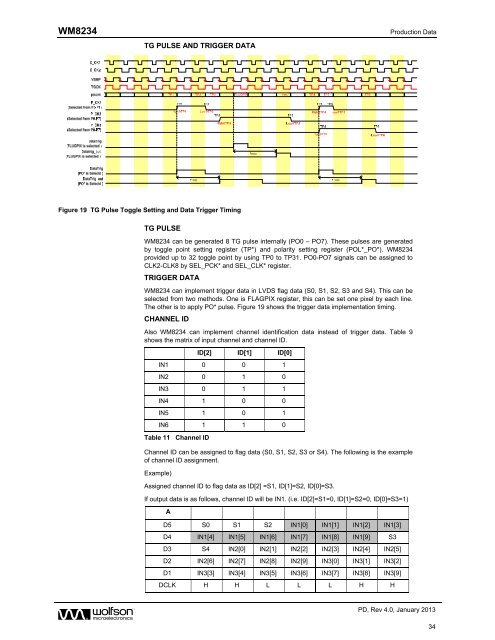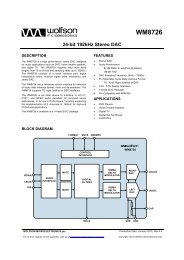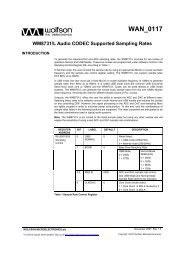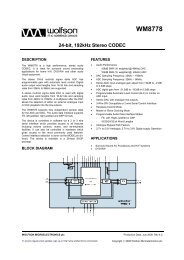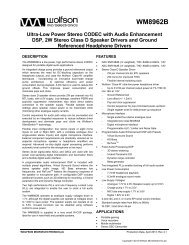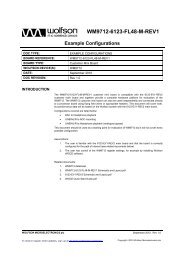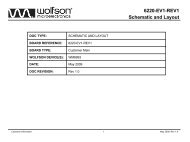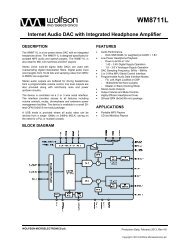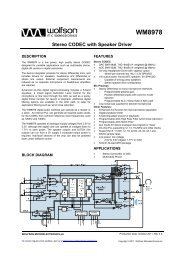WM8234, Rev 4.0 - Wolfson Microelectronics plc
WM8234, Rev 4.0 - Wolfson Microelectronics plc
WM8234, Rev 4.0 - Wolfson Microelectronics plc
- No tags were found...
You also want an ePaper? Increase the reach of your titles
YUMPU automatically turns print PDFs into web optimized ePapers that Google loves.
<strong>WM8234</strong>TG PULSE AND TRIGGER DATAProduction DataFigure 19 TG Pulse Toggle Setting and Data Trigger TimingTG PULSE<strong>WM8234</strong> can be generated 8 TG pulse internally (PO0 – PO7). These pulses are generatedby toggle point setting register (TP*) and polarity setting register (POL*_PO*). <strong>WM8234</strong>provided up to 32 toggle point by using TP0 to TP31. PO0-PO7 signals can be assigned toCLK2-CLK8 by SEL_PCK* and SEL_CLK* register.TRIGGER DATA<strong>WM8234</strong> can implement trigger data in LVDS flag data (S0, S1, S2, S3 and S4). This can beselected from two methods. One is FLAGPIX register, this can be set one pixel by each line.The other is to apply PO* pulse. Figure 19 shows the trigger data implementation timing.CHANNEL IDAlso <strong>WM8234</strong> can implement channel identification data instead of trigger data. Table 9shows the matrix of input channel and channel ID.ID[2] ID[1] ID[0]IN1 0 0 1IN2 0 1 0IN3 0 1 1IN4 1 0 0IN5 1 0 1IN6 1 1 0Table 11 Channel IDChannel ID can be assigned to flag data (S0, S1, S2, S3 or S4). The following is the exampleof channel ID assignment.Example)Assigned channel ID to flag data as ID[2] =S1, ID[1]=S2, ID[0]=S3.If output data is as follows, channel ID will be IN1. (i.e. ID[2]=S1=0, ID[1]=S2=0, ID[0]=S3=1)AD5 S0 S1 S2 IN1[0] IN1[1] IN1[2] IN1[3]D4 IN1[4] IN1[5] IN1[6] IN1[7] IN1[8] IN1[9] S3D3 S4 IN2[0] IN2[1] IN2[2] IN2[3] IN2[4] IN2[5]D2 IN2[6] IN2[7] IN2[8] IN2[9] IN3[0] IN3[1] IN3[2]D1 IN3[3] IN3[4] IN3[5] IN3[6] IN3[7] IN3[8] IN3[9]DCLK H H L L L H HwPD, <strong>Rev</strong> <strong>4.0</strong>, January 201334


